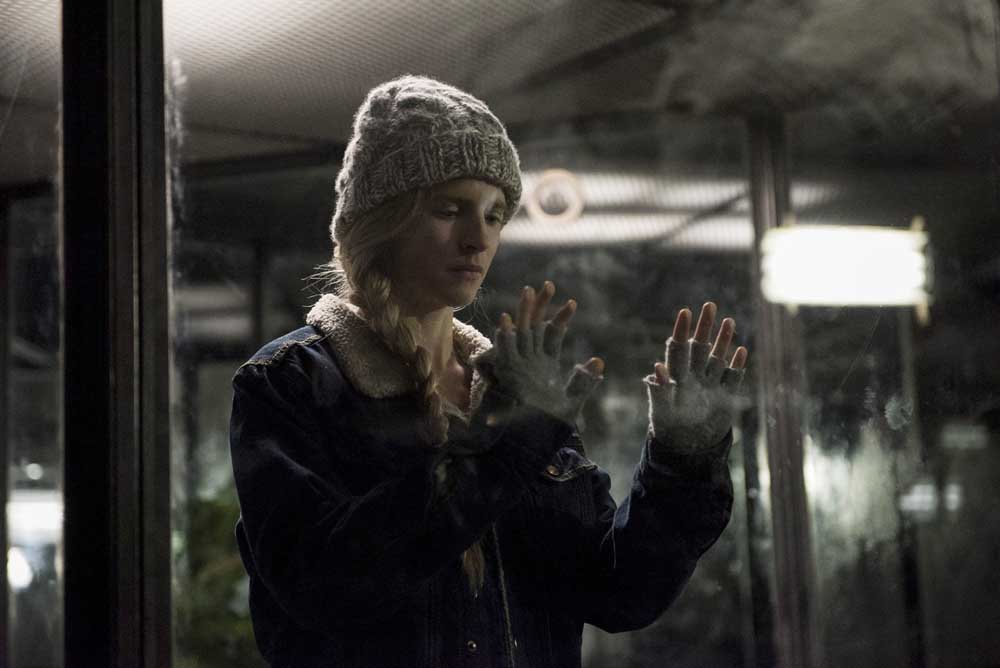‘The OA’ and the power of choreography
Published 12:02 am Saturday, February 4, 2017

- Brit Marling created and stars in the Netflix series “The OA.” (JoJo Whilden/Netflix)
A young woman, blind and adopted, disappears from a small town. When she returns seven years later, she can see. But that’s not the strangest part about “The OA,” a brooding Netflix series that involves abductions, brain experiments and a shooting. The real surprise is the choreography.
Even more than dialogue, this story reveals itself through movement — five movements, to be exact. When executed in unison by five people, these actions have the power to liberate the body. They bring a dead man back to life. And they create the ability to open the door to another dimension.
For a group of characters imprisoned behind glass in an underground laboratory, the movements, which they discover over time, are their only chance for escape. Their captor, a scientist, has chosen them because they survived near-death experiences.
It’s true that “The OA” requires patience (the movements don’t even appear until midway through) and a boundless suspension of disbelief, but it puts across an eerily poetic idea: that movement, or dance, heals if it is performed with the right effort and intensity.
Brit Marling, who stars in “The OA” and created it with Zal Batmanglij, said in an interview that violence has often been used as a way to wake up an audience. They wanted to try something else.
“We started to ask ourselves, is there something else that was also uniquely cinematic that could be a kind of antidote to violence or that could be an expression that could similarly shock or to awaken that would be a counterbalance?” she said. “I think that’s why the idea of using movement as a language started to percolate.”
Choreographed by Ryan Heffington, who has worked extensively with pop singer Sia as well as presented his own contemporary dance works, the movement phrases accumulate and grow in power the more they are repeated. Part of the story deals with the characters’ struggle to discover the movements — not entirely unlike a choreographer’s relentless search for the most potent step.
Jerky and askew, yet primal, the five moments, or dance phrases, create a sense of order and ritual: A hand, positioned like a triangle and pressed against the chest, pushes forward. Fingers wiggle out like tentacles. Both arms stretch out for a moment like wings, and then the elbows pull in sharply and the chin lifts to reveal the face. As abstract as it is, the choreography builds emotion through repetition and allows sensation rather than words to guide the story.
“I didn’t want it to become this postmodern contemporary dance routine that made no sense,” said Heffington, who has known the show’s creators for 15 years and worked on their 2013 film “The East.” On “The OA,” he said, the characters perform the movements “eye to eye, breath to breath, face to face — that feels so real.”
To make the movements feel authentic, the actors trained for six months. For the musical “La La Land,” Emma Stone and Ryan Gosling trained for two months; the difference is palpable. The actors on “The OA” don’t look like amateur dancers. The movement is in their blood.
“Zal and I are real believers in practice, and that’s an aspect of the story,” Marling said.
Heffington’s choreography is complex — for its precision, speed and timing — so the cast needed to be drilled incessantly.
“What is so impressive is the effort,” Heffington said. “You see it on camera, you see it in their faces, you see it in their bodies. They go to the extreme.”
Marling said she had some experience dancing while growing up but never trained seriously; practicing the movements, for her, was an extraordinary experience.
“I would feel this kind of alertness in all of my senses and some kind of radical aliveness,” she said. “And a return to the present tense rather than thoughts of the future and doubts about the future or traps to the past.”
When she and Emory Cohen, who plays Homer Roberts, another prisoner, were learning the choreography, they faced the mirror to learn how to move in sync. They attained accuracy, but something was missing. One day, Denna Thomsen, who works with Heffington, told them to ignore the mirror and to perform for each other.
“The movements became so possessed of narrative and story and a deep need to communicate that it became quite literally a language,” Marling said. “It was so intense and so full of feeling that we actually had to stop doing it until we were on set. It was unsustainable.”
Before shooting, the crew didn’t know what the movements would look like. Of her first scene performing them with Cohen, Marling said, “Everything fell away. We were just two people stuck in our bodies, wanting to break all constraints, wanting to tell each other complex things about need and betrayal and loss and love and only having these movements with which to do it. It touched something so sublime.”
Can dance change lives? In “The OA,” it does.
“When people say, ‘I was crying when I was watching it,’ it’s like, exactly,” Heffington said. “That is exactly what dance has the power to do. Whether or not it’s true — which I think is a beautiful question in the series — I know that it can heal.”






